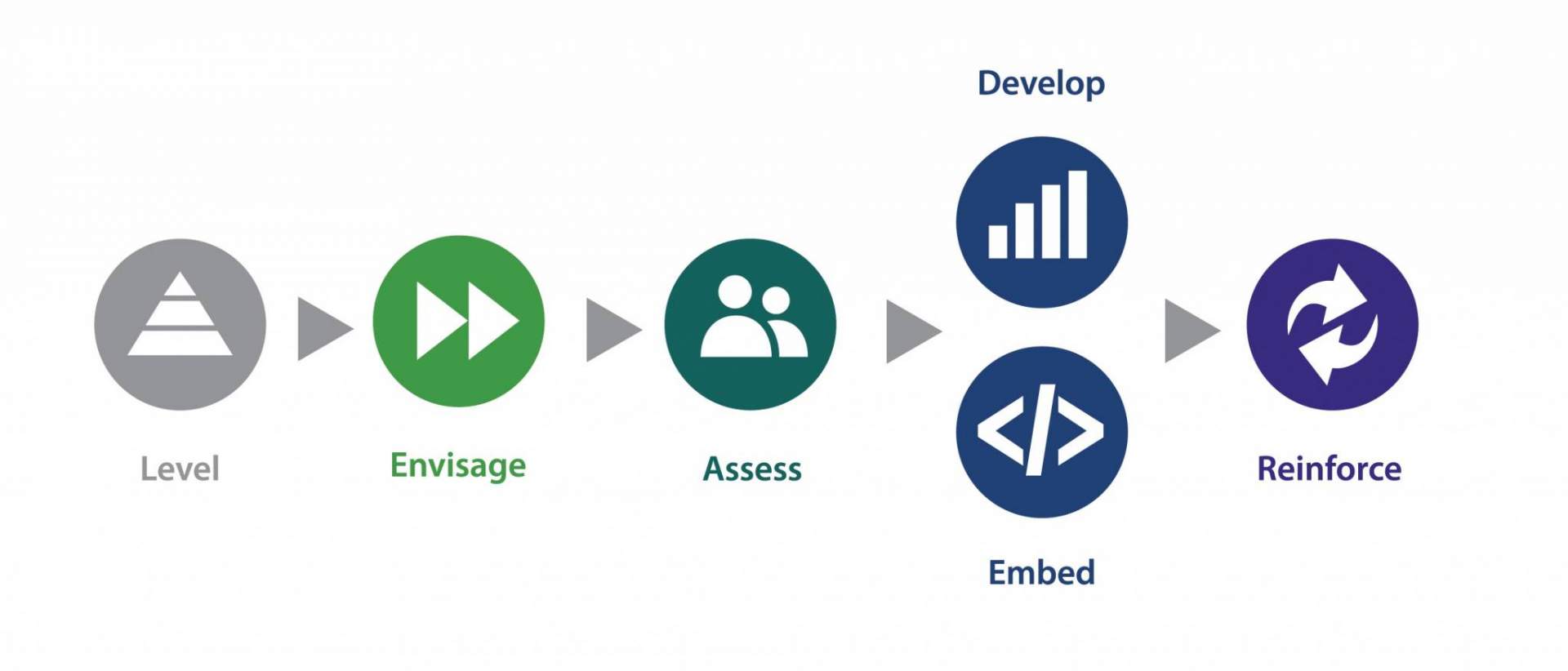I’ll bet most of the companies that are in life-or-death battles got into that kind of trouble because they didn’t pay enough attention to developing their leaders. Wayne Calloway, former Chairman, PepsiCo Inc.
Here’s the bottom line: companies which don’t invest in developing their leaders make less than half the revenue per employee compared to those which do¹. Those same companies deliver shareholder returns that are 22% lower². The companies’ value can be reduced by as much as 30%³.
Strategic leadership development is critical if you want to sustain the fast growth of a high-tech organisation. Let me explain why.
Despite an uncertain economy, political issues around the world and competition increasing on a daily basis, technology companies continue to deliver growth and create jobs. Importantly, they are optimistic about the future.
Since the end of the financial crisis, we have seen a UK Tech Sector that has delivered six years of continuous growth and created jobs at a faster and higher rate than the rest of the UK economy. KPMG Tech Monitor
The High-tech Sector has supported a massive increase in the number of digital start-ups and has been a source of many successful fast-growing scale-up companies. The number of high-tech companies has risen by a third since 2010, which is twice the level of growth for all private sector enterprises.
IBM studies reveal that over 70% of CEOs say employees are their primary source of sustainable economic value. Yet most organisations lack the skills they need to compete, and that’s affecting business. Research by Accenture shows that 66% of companies expect to lose business because of talent gaps.
Engagement is also an issue. Disengaged workers continue to outnumber engaged workers. Gallup tells us that, in the UK alone, actively disengaged employees cost the country between £52 billion and £70 billion per year. It’s not surprising that companies are worried about their leadership pipelines.
That’s a danger for high-tech companies which want to continue to grow.
Strong leadership and skilled, motivated employees are critical for the growth of any company. When that growth is fast, it’s even more important. There aren’t many other businesses that evolve as quickly as the High-tech Sector, and that can create unique challenges.
One example that is distinctive is the need for leaders to really know their employees. As the High-tech Sector changes, there will always be a group of employees who want to learn about the latest tools. Leaders need to keep them at the forefront of the developments so that they stay engaged. But there will be other employees who tire of always having to learn new technologies. Instead, they want to focus on the business aspect of technology delivery. It’s important for leaders to know how to manage both types of people. They need the right blend of staff to keep the business tech-savvy as well as business-focused.
High-tech companies can no longer leave that to chance and hope that their employees are as engaged as they want them to be. The competition for talent in the tech sector is fierce…and employees know it.
Research by Culture Amp shows that employees in the High-tech Sector are more positive about their companies than those in other industries. In particular, they are more likely to recommend their company as a great place to work and are more motivated to put in an extra effort. They may not be looking for another job right now, but they are not necessarily committed to staying with their company in the medium to long-term.
Fast-growing high-tech companies are busy. And they are so busy focusing on the here and now that it’s a challenge for them to concentrate on future growth. But this can’t wait. Leadership isn’t about the here and now. Leadership is about the future. And the company needs leaders who can take them there.
To compete, tech companies need a business-led leadership development strategy that will help them develop the leaders they need.
So, what’s the answer?
In my book, Grow Your Geeks, I outline a six-step process you can use to design and implement such a strategy.

In summary, the six steps are:
1. Level. What level are you currently at when it comes to developing leaders? What level do you need to be at? Build the business case for leadership development in your organisation.
2. Envisage the leaders you need for the future. Align leadership development with the business strategy and define the key metrics.
3. Assess the readiness of your potential leaders to take on new roles and responsibilities. How ready, willing and able are they?
4. Develop the skills, behaviours and confidence of your future leaders.
5. Embed. In parallel with Develop, embed new behaviours in the workplace to improve leadership on a day-to-day basis.
6. Reinforce and support new leadership behaviours through organisational routines, processes and systems.
Leadership development isn’t ‘just about running a training programme’. You need to take a strategic view, determining the leadership capacity, capability and culture required for success.
If you’d like to find out more about the LEADER System, why not download a free copy of my ebook LEADER – How to Develop Remarkable Leaders Who Deliver Amazing Results.
¹Bersin (2010), ‘Talent Management Factbook’
²McKinsey (2001), ‘War for Talent Studies’
³Watson Wyatt (2005), ‘Human Capital Index’
Note: This post is based on and adapted from Grow Your Geeks. A Handbook for Developing Leaders in High-tech Organisations by Antoinette Oglethorpe



